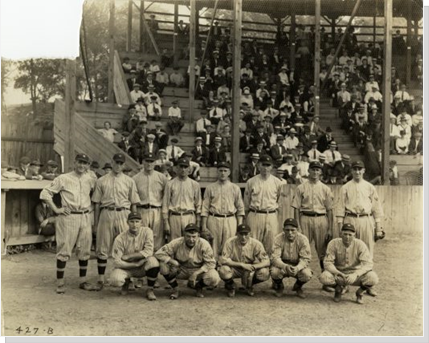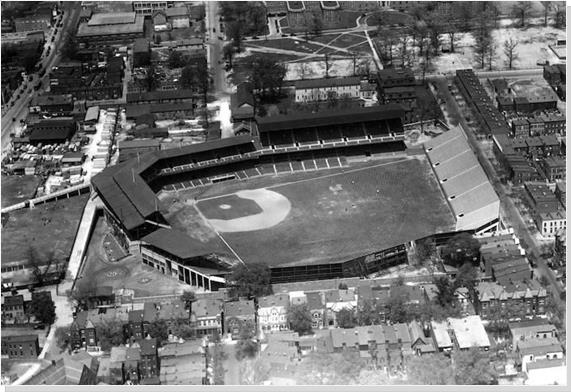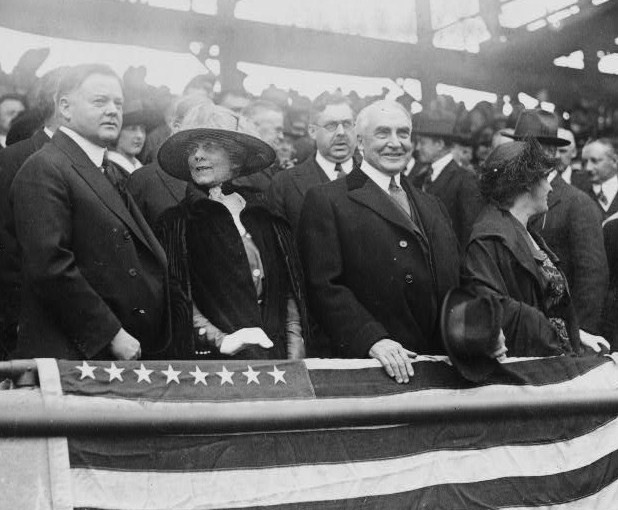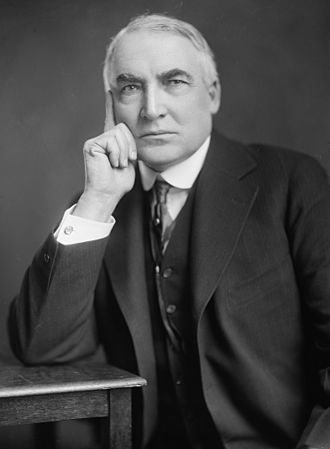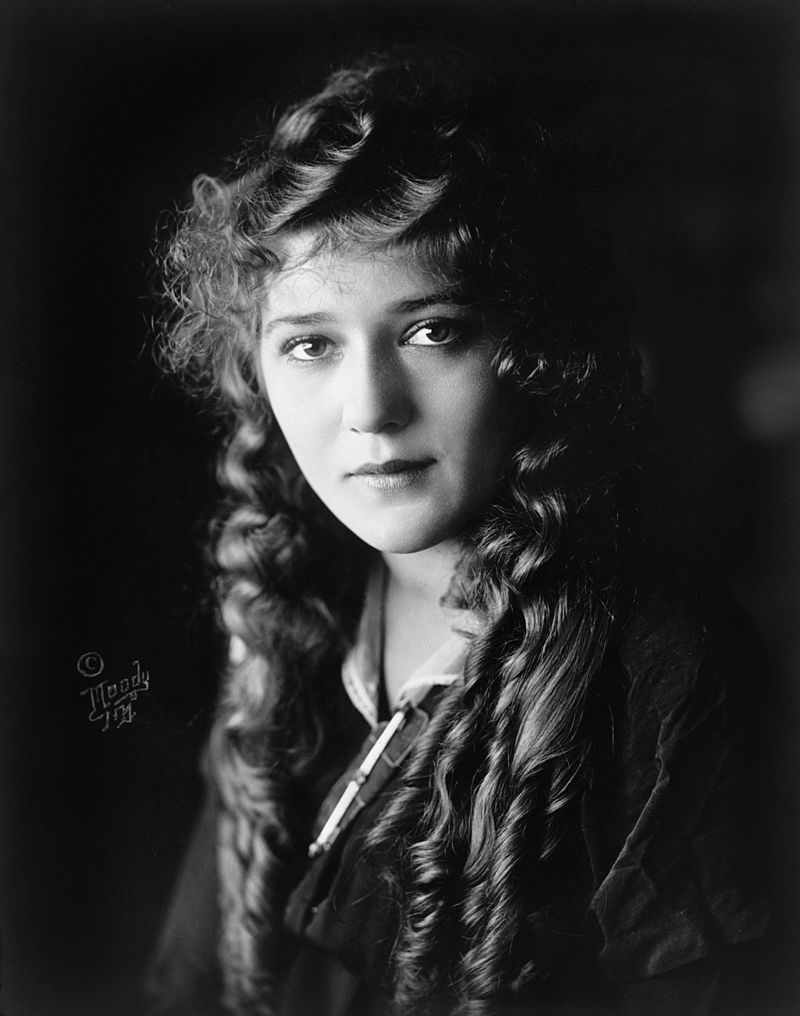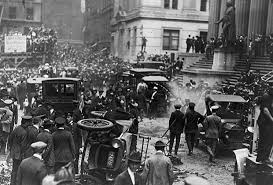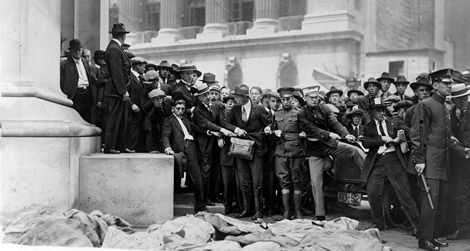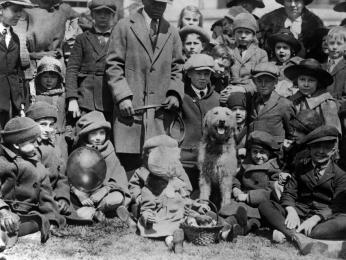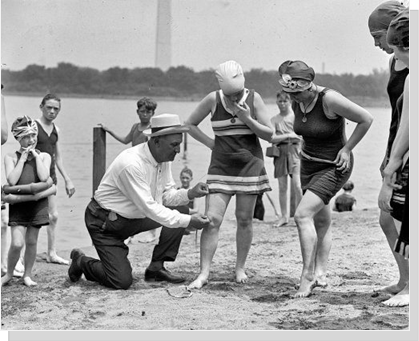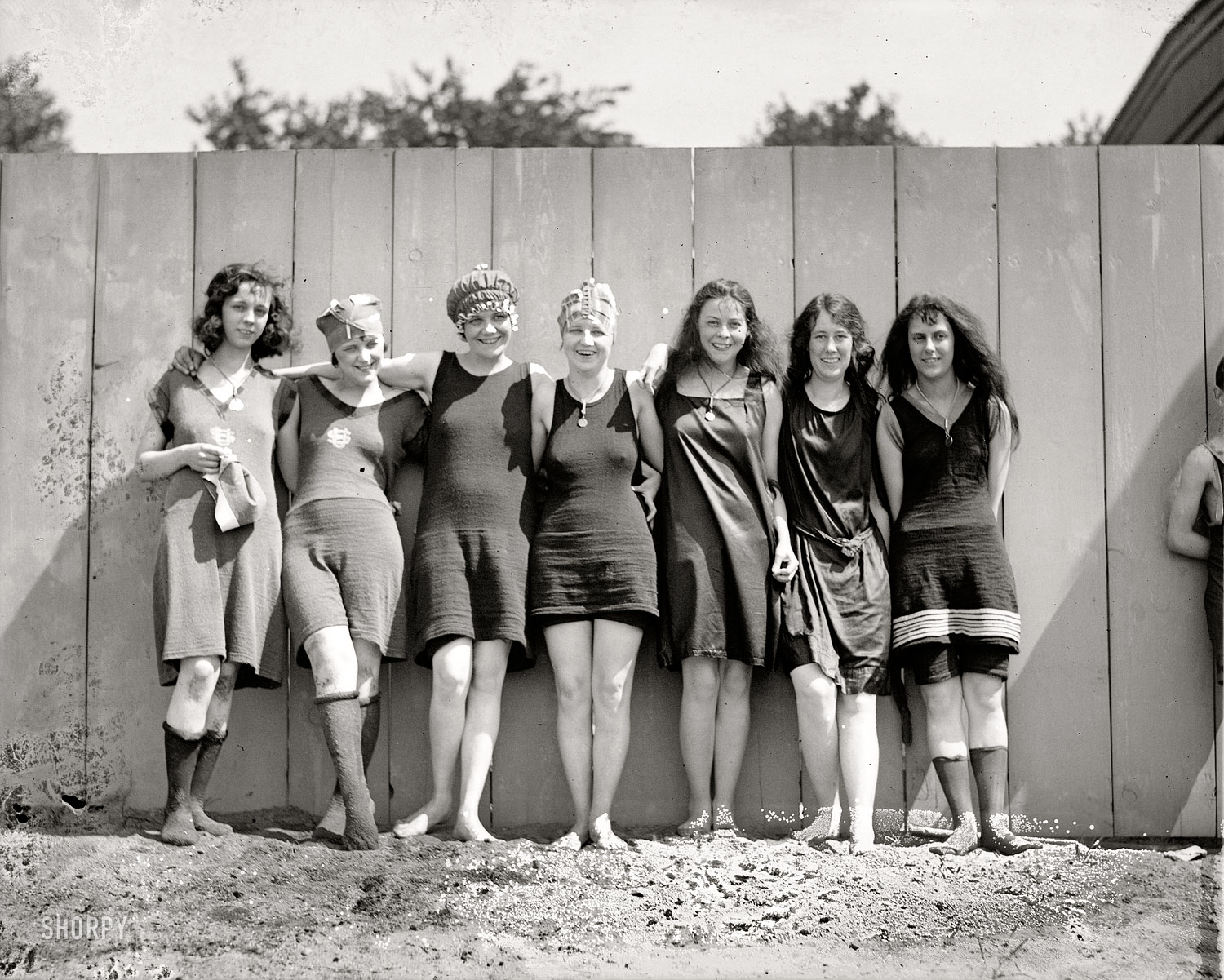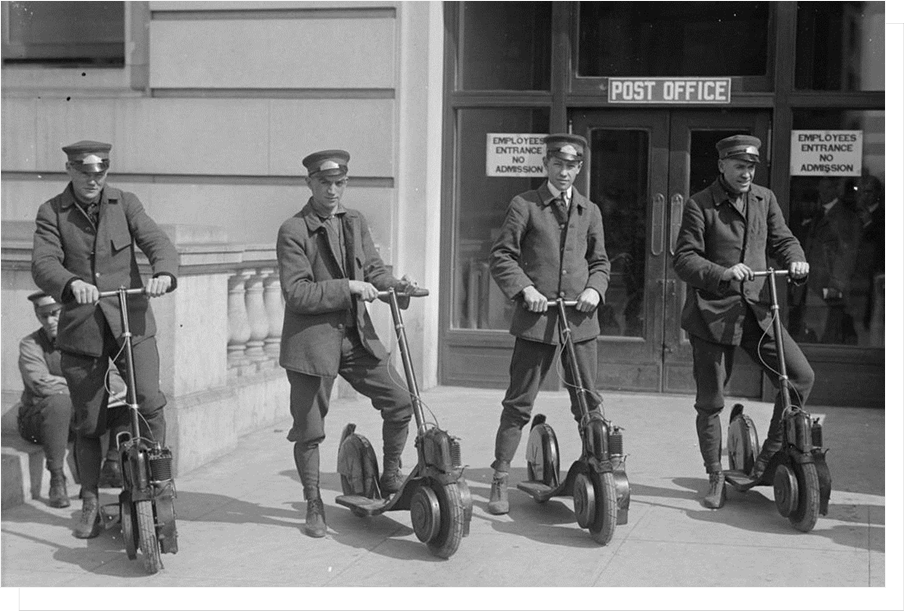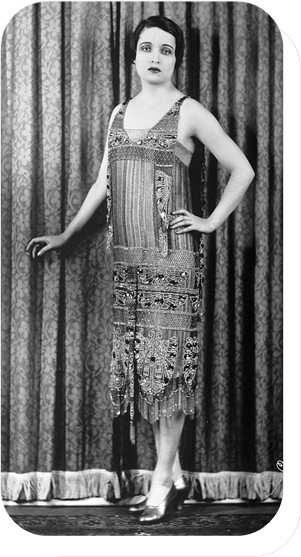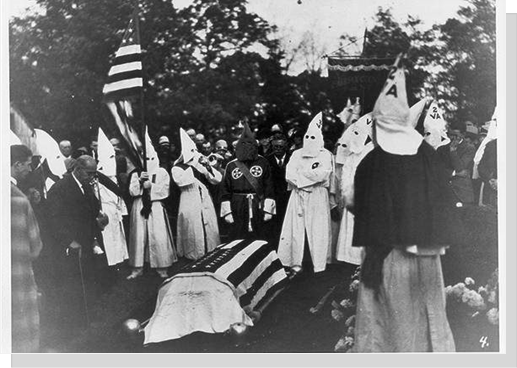
What a Difference a Century Makes: 1920
By: M. Callahan
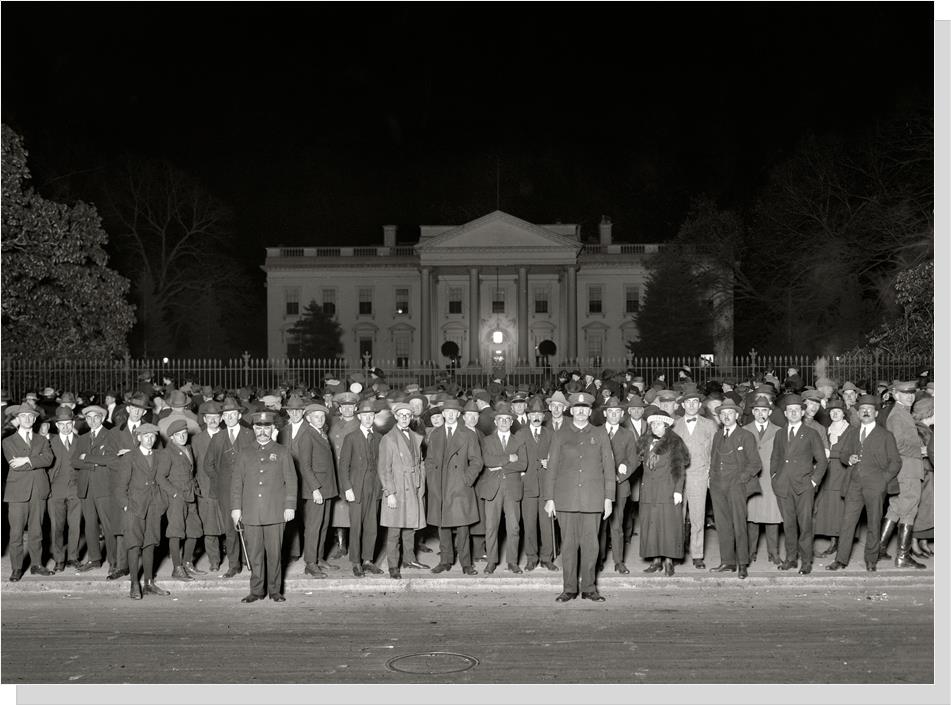 ELECTION NIGHT CROWD OUTSIDE WHITE HOUSE 1920US Population: 106,021,537 - 15% rise over 1910
ELECTION NIGHT CROWD OUTSIDE WHITE HOUSE 1920US Population: 106,021,537 - 15% rise over 1910
Public Figures
President: Warren G. Harding
Vice President: Calvin Coolidge
Virginia Governor: Henry Carter Stuart
Chief Justice Supreme Court: Edward Douglass White
Speaker of the House: Frederick H. Gillett (R-Massachusetts)
VA Senators: Claude A. Swanson & Carter Glass
BORN: Carwood Lipton, Margaret O’Hara, Isaac Stern, Pope John Paul II, John Paul Stevens
DIED: Robert Perry, Amedeo Modigliani, Peter Carl Faberge, Alexander of Greece
MARRIED: Mary Pickford to Douglas Fairbanks, F. Scott Fitzgerald to Zelda Sayre
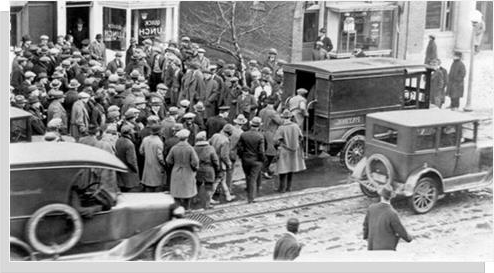
THE RED SCARE: Federal agents led by Attorney General A. Mitchell Palmer and J. Edgar Hoover crashed into workplaces, homes across the country, and meeting places viciously beating and arresting everyone. More than 50 cities were raided and between 4,000 and 10,000 were abducted. Soon after the raids, deportation hearings began followed by mass deportations. Anyone suspected of sympathy with the Russian revolution or membership in any communist or anarchist organization or even those nearby were subjugated in this massive federal frenzy.
Although there was no legal basis for most arrests, and most people arrested were later released, many people were deported and many more were held for months without charges. People were beaten and tortured, lives were ruined, and families were torn apart.
HISTORICAL EVENTS
- The League of Nations was established in Paris, an international organization, headquartered in Geneva, Switzerland, created after the First World War to provide a forum for resolving international disputes. At its height, it had 58 member states. The US never joined in spite of urging and organizing by President Woodrow Wilson
- Following his attendance at the Paris Peace Conference in 1919, Woodrow Wilson returned to the United States to campaign for Senate approval of the peace treaty and the League of Nations Covenant. However, he suffered a stroke in October 1919 which left him bedridden and partially paralyzed. For the remainder of her husband's presidency, she acted as a de facto steward and determined which communications and matters of state were important enough to bring to the attention of the bedridden president.
- On September 16, 1920, an explosion at the corner of Wall and Broad Streets in downtown Manhattan killed 39 people and wounded hundreds more. It would be the deadliest terror attack on American soil until the Oklahoma City bombing 75 years later. This served as a violent protest against the nation’s wealth being centered around the very few at the expense of laborers and their unions resonated with many Americans, leading to terrorism by anarchists and assassins.
- The Eighteenth Amendment prohibiting alcohol in the United States was passed. This was largely a victory for Yankee moral values over those of immigrants, but now many of the great cities practically ignored the measure. Many Americans just hid their liquor stores in underground bunkers and frequented bars/clubs known as Speakeasies where a password had to be given at the entrance to screen out informers and police moles. Result of Prohibition: drunk and disorderly arrests increased 41 percent; drunk driving increased 81 percent; violent crime and murder went up 13 percent; the federal prison population swelled by 366%.
- Women gain the right to vote with ratification of the 19th Amendment.
- The Ku Klux Klan, a white supremacist hate group, whose primary targets were African Americans, Catholics, Jews, Asians, and Europeans not from the non-Nordic countries of the north was resurrected and revitalized in the 1920’s. First founded in the Civil War Reconstruction Period with the purpose of terrorizing recently freed African Americans in an attempt to limit their voting power and financial accumulation, the 1920’s Klan continued with intimidating mass marches, vandalizing African American establishments or those sympathetic to universal civil rights, and multiple cases of lynching. Many Confederate Civil War statues were also erected, often outside courthouses and polling places to intimidate African American voters.
- With the ending of World War I a housing boom in Britain and the United States leads to an increase in home ownership. For the first time in US history, a major and continuing shift of the population from rural to urban areas.
- The Russian Civil war ends but the country struggles as a famine begins in 1920 and worsens the following year.
- In November 1920, the first commercially-licensed radio station began broadcasting live results of the presidential election. The “talking box” exploded in popularity. Two years later, Americans bought 100,000 radios. In 1923, they bought 500,000. By 1926, there were over 700 commercial radio stations with nationwide coverage.
- The Palmer Raids lead to the arrest and deportation of 6,000 foreign aliens suspected radical leftists. The distrust of Germany was now replaced with distrust, even rabid hatred of communism, fascism, and labor unions.
- The Yankees and Babe Ruth rule the world of Baseball setting records for both team and player.
- Life moved fast as a new sense of prosperity and freedom emerged at the end of World War I. Products were manufactured in mass-produced packaging. New inventions brought electric lights, airplanes, new communication systems in the form of radios, Eskimo Pies, Jungle Gym, Traffic Lights, Electric Refrigerators, and Lie Detector, and within the decade Aerosol Sprays, Antibiotic Penicillin, Frozen Food, Handheld Hair Dryer, Vacuum Tube Hearing Aid, Iron Lung, Liquid Fuel Rocket , Quartz Clock, Adhesive Bandages, Talking Pictures, Television, Ultracentrifuge (Separates Proteins) Videophones , and Electric Razors.
- Cars created the largest industry in the US - $800 million.
- A new form of architecture known as Art Deco emerged with great popularity.
- Jazz was the music of popular choice and some of the best known musicians were jazz musicians including Duke Ellington and Al Jolson, George Gershwin.
- A popular dance of the times was known as the Charleston.
- The Allies of World War I demand that the Netherlands extradite German Kaiser Wilhelm II, who fled there in 1918.
- The American Civil Liberties Union (ACLU) is founded.
- A woman named Anna Anderson tries to commit suicide in Berlin, and is taken to a mental hospital, where she claims she is Grand Duchess Anastasia of Russia.
- Constantinople is occupied by British Empire forces, acting for the Allied Powers against the Turkish National Movement. Retrospectively, the Grand National Assembly of Turkey regards this as the dissolution of the Ottoman regime in Istanbul.
- Greece begins using the Gregorian calendar.
- The United States Senate refuses to ratify the Treaty of Versailles.
- The 1920 Summer Olympics open in Antwerp, Belgium. The Olympic symbols of five interlocking rings and the associated flag are first displayed at the games.
- The United States Post Office Department rules that children may not be sent via parcel post.
- The first commercial radio station in the United States, 8MK (WWJ), begins operations in Detroit. It is owned by the Detroit News, the first U.S. radio station owned by a newspaper.
- 1920 United States presidential election: Republican U. S. Senator Warren G. Harding defeats Democratic Governor of Ohio James M. Cox and Socialist Eugene V. Debs, in the first national U.S. election in which women have the right to vote.
- The Government of Ireland Act 1920, passed by the Parliament of the United Kingdom, receives Royal Assent from George V, providing for the partition of Ireland into Northern Ireland and Southern Ireland, with separate parliaments, granting a measure of home rule.
- The Russian White Army's last units and civilian refugees are evacuated from the Crimea on board 126 ships plus the remnants of the Russian Imperial Navy, to Turkey, Tunisia and the Kingdom of Serbs, Croats and Slovenes. This was accompanied by wide-scale civilian massacres. The total number of evacuees reported to be 150,000 people, of which 20% are civilians.
- Albert Einstein's theory of general relativity is confirmed when the Royal Astronomical Society sees the predicted effect during a solar eclipse.
1920s Fashion Trends for Women
- Below knee length drop waist dresses with a loose, straight fit.
- Beaded evening dresses inspired by “flappers”
- Mary Jane or T-strap heels.
- Casual sport golf knickers, argyle socks, blouse and tie.
- Cocoon fur coats and fringe wraps
- Cloche hats and short bobbed hairstyles.
Favorite Pastimes
- Golf
- Tennis
- Swimming
- Dancing
- Football
- Baseball
- Travel especially by car
Popular slang
- Babe, Bim, Broad, Doll or Dame = woman
- Moll = gangster's girlfriend.
- Bearcat = fiery woman.
- Flapper- a fashionable young woman of the 1920s, typically with short, bobbed hair, and a short skirt.
- Flat tire = a boring person
- Flivver- a broken down car.
- Berries = attractive or pleasing; similar to bee's knees, As in "It's the berries."
- Big Cheese - The most important or influential person. Same as big shot.
Favorite Colors
Colors were overall of a muted or pastel palette. Such as jade green, dusty peach, deep pink (called Rose or Ashes of Roses), navy blue, medium blue, faded yellow, light grey, sand, burnt orange, buff, and violet (purple.) Black was another fashionable color that no longer meant you were in mourning.
The Roaring Twenties
The Roaring Twenties was a time when many people defied Prohibition and were exuberant about new styles of dress, dance, music and disparaged what was then considered acceptable behavior.
Sports Highlights
The longest game in Major League Baseball was played between the Brooklyn Dodgers and the Boston Braves on May 1, 1920. It ended with 26 innings.
The New York Yankees purchased Babe Ruth from the Boston Red Socks for $125,000 on Jan. 5, 1920. That year he hit 54 home runs. the Yankees won 39 AL pennants and 26 World Series titles. The Red Sox thereafter went 86 years without a World Series win.
SPORTS
World Series: Cleveland Indians over Brooklyn Dodgers 7-5.
Stanley Cup: Ottawa Senators over Seattle Metropolitans 3-2.
World Heavyweight Boxing: Jack Dempsey
USPGA Championship: Jock Hutchison
US Open: Ted Ray
British Open: George Duncan
Horseracing-Triple Crown: Kentucky Derby-Paul Jones
Preakness-Man o’War
Belmont Stakes-Man o’War
Tennis: US Men's Singles Bill Tilden (USA) Bill Johnson (USA)
US Women’s Singles: Molly Mallory (Norway) defeats Marion Zinderstein (USA)
America’s Cup: The New York Yacht Club retains the America's Cup as Resolute defeats British challenger Shamrock IV, of the Royal Ulster Yacht Club, 10 races to 2.
NOBEL AWARDS 1920:
Medicine: August Krogh for his discovery of the capillary motor regulating mechanism.
Peace: Leon Bourgeois, France
Literature: Kurt Hamson for Growth of the Soil
Chemistry: Walther Nerst in recognition of his work in thermochemistry
Physics: Charles E. Guillaume in recognition of the service he has rendered to precision measurements in Physics by his discovery of anomalies in nickel steel alloys
Pulitzer-Drama: Beyond the Horizon by Eugene O'Neill
Pulitzer-History: The War with Mexico by Justin Harvey Smith
Pulitzer-Biography or Autobiography: The Life of John Marshall by Albert J. Beveridge
Pulitzer Journalism: John Leary New York World
COST OF COMMON CONSUMER GOODS
The prosperity of the 1920s led to new patterns of consumption, like radios, cars, vacuums, beauty products, clothing and much, much more.
The expansion of credit in the 1920s allowed for the sale of more consumer goods and put automobiles within reach of average Americans. Now individuals who could not afford to purchase a car at full price could pay for that car over time -- with interest. For many middle-class Americans, the 1920s was a decade of unprecedented prosperity. Rising earnings generated more disposable income for the purchase of consumer goods.
Ford’s advances in assembly-line efficiency created a truly affordable automobile, making car ownership a possibility for many Americans
Consumer Price Index: 20%
First-class stamp: $0.02
Unemployment: 5.2%
Loaf of bread: $0.12
Ave. Family Income: $3,269.40
Pound of Butter: $0.70
One dozen eggs: $0.47
Quart of milk: $0.33
Pound of Sugar: $0.97
Pound of Bacon: $0.52
Pound of Coffee: $.47
Chicken (pound): $.39
Cheese (pound): $.38
Round Steak (pound): $.40
Oranges (6): $.25
Model T Car: When production of the Model T began, the cost was around $850, around $1200 less than most cars. By the early 1920's, the price of the Model T cost about $300.
Newspaper: $0.02 daily edition
Movie Tickets: Day $0.10-.25
Ave. Cost of Home: Few thousand to $10,000 depending on size and location.
Telephone: At the beginning of the century, the Bell system charged $99 per thousand calls in New York City; by the early 1920s a flat monthly residential rate of $3 was typical.
1920 Washington
DC Population: 437,571 - 32% increase over 1919
In 1911, the Senators' wooden ballpark burned to the ground, and they replaced it with a modern concrete-and-steel structure on the same location reported to cost $100,000. First called National Park, it was later renamed Griffith Stadium, after the man who was the Washington manager in 1912, Clark Griffith. The stadium had a natural grass surface and seating for 27,000. Griffith Stadium was a beloved sporting home to Washington Fans until 1965 when it was demolished. It sat on what is now Howard University Hospital.
The longtime competitive struggles of the team were fictionalized in the book The Year the Yankees Lost the Pennant, which became the legendary Broadway musical and movie Damn Yankees (starring leading-man, Tab Hunter). The 1920 Washington Senators won 68 games, lost 84, and finished in sixth place in the American League. The Senators were making their way to the top with a brighter future just ahead.
The First White House Dog
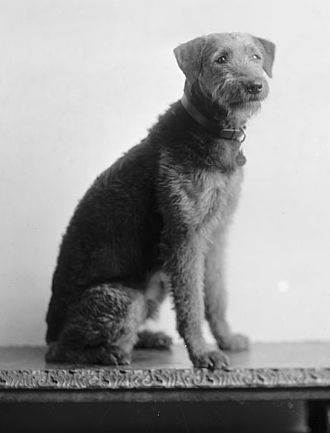 Laddie Boy an Airedale Terrier owned by President Warren G. Harding captured hearts nationwide and skyrocketed to fame as the faithful First Dog and star of the Harding White House. When the president played golf and hit a tree, Laddie Boy would run up to the tree and retrieve the ball. The White House held birthday parties for the dog, invited other neighborhood dogs to join, and served them dog biscuit cake. Laddie Boy even had his own hand carved chair for Cabinet meetings. A thousand bronze miniatures of him were made and the President handed them out like a proud father handing out cigars to celebrate the birth of a child.
Laddie Boy an Airedale Terrier owned by President Warren G. Harding captured hearts nationwide and skyrocketed to fame as the faithful First Dog and star of the Harding White House. When the president played golf and hit a tree, Laddie Boy would run up to the tree and retrieve the ball. The White House held birthday parties for the dog, invited other neighborhood dogs to join, and served them dog biscuit cake. Laddie Boy even had his own hand carved chair for Cabinet meetings. A thousand bronze miniatures of him were made and the President handed them out like a proud father handing out cigars to celebrate the birth of a child.
Harding and his wife Florence shared a love of animals and the First Lady, an advocate for the care of abused and neglected animals, soon began employing Laddie Boy as a poster child for the national promotion of animal rights issues.
Following President Harding’s premature death in 1923, newsboys collected 19,134 pennies to be re-melted and sculpted into a statue of Laddie Boy. Harding's widow died before the statue was completed so the statue was presented to the Smithsonian where it was displayed for many decades.
After the president’s death in 1923, Florence Harding gave Laddie Boy to Harry Barker, her favorite Secret Service agent. She knew her poor health wouldn’t allow her to look after the dog properly. Harry took Laddie home to his family in Boston, and the dog lived a very normal life in this loving home. Laddie’s death in 1929 was proclaimed in newspaper headlines across the country. In the summer of 2012, Laddie Boy's unique collar, fashioned from Alaskan gold nuggets, was stolen from the Harding Home and Museum in Ohio.
The Tidal Basin Beach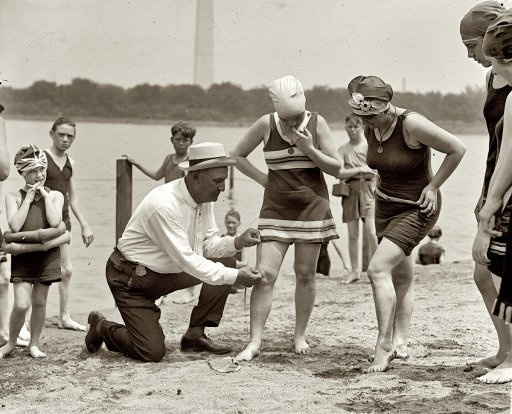 Washington police officer Bill Norton, pictured above, was charged with measuring the distance between the knee and the swimsuit of females bathing at the Old Tidal Basin Beach. Chances are he loved the task of ogling, harassing, and touching young women in this monstrously vital defense of morality. Colonel Sherrill, the Superintendent of Public Buildings and Grounds had issued an order that swimming costumes were not be more than six inches above the knee so young women would remain decent, while swimming. (Please note: He is NOT measuring the exposed skin of the young boys who wear basically the same swimwear, although generally shorter.) The Tidal Basin Beach was a popular place for Washingtonians to cool off in the sweltering Washington summers.
Washington police officer Bill Norton, pictured above, was charged with measuring the distance between the knee and the swimsuit of females bathing at the Old Tidal Basin Beach. Chances are he loved the task of ogling, harassing, and touching young women in this monstrously vital defense of morality. Colonel Sherrill, the Superintendent of Public Buildings and Grounds had issued an order that swimming costumes were not be more than six inches above the knee so young women would remain decent, while swimming. (Please note: He is NOT measuring the exposed skin of the young boys who wear basically the same swimwear, although generally shorter.) The Tidal Basin Beach was a popular place for Washingtonians to cool off in the sweltering Washington summers.
Reproduction of this story and photographs, in part or in whole, requires the written permission of the author. Copyright © 2011 Annandale Chamber of Commerce. All rights reserved.
(Photographs, on this page, and on this website, are the sole property of the Annandale Chamber of Commerce, and are not available for use by other publications, blogs, individuals, web or social media sites.)
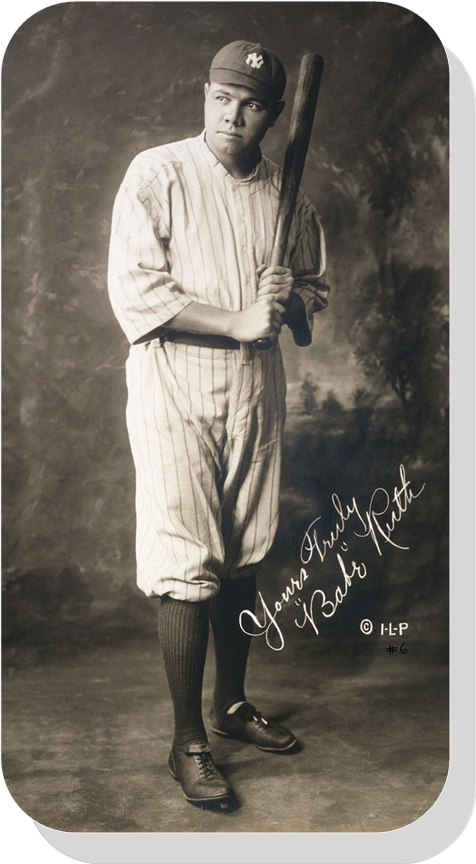

Pictures are from Wikipedia and the Library of Congress, Private Collections, Library of Virginia, and the Imperial War Museum.
Reproduction of this story and photographs, in part or in whole, requires the written permission of the author. Copyright © 2011 Annandale Chamber of Commerce. All rights reserved.
Copyright 2012 Annandale Chamber of Commerce. All rights reserved. Privacy Policy
